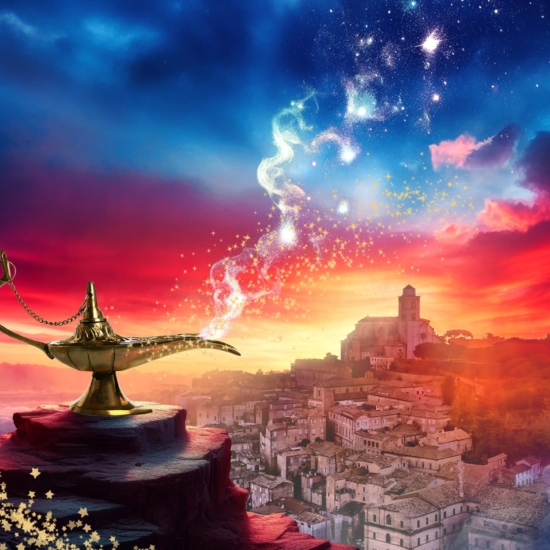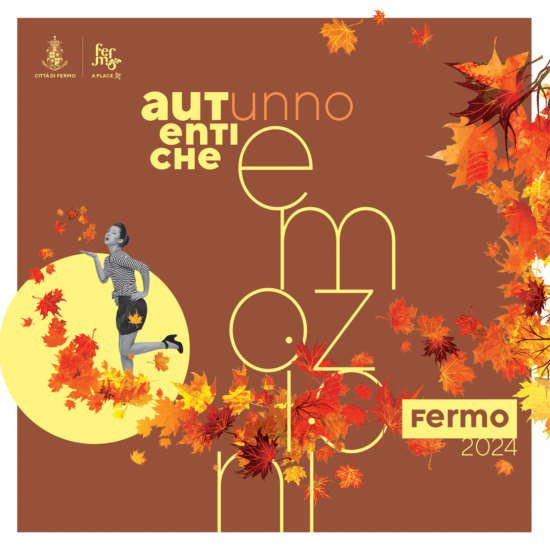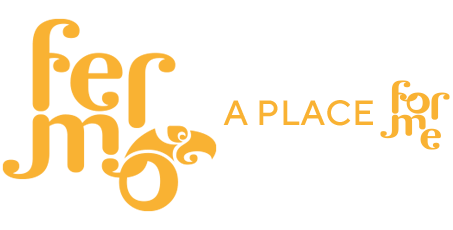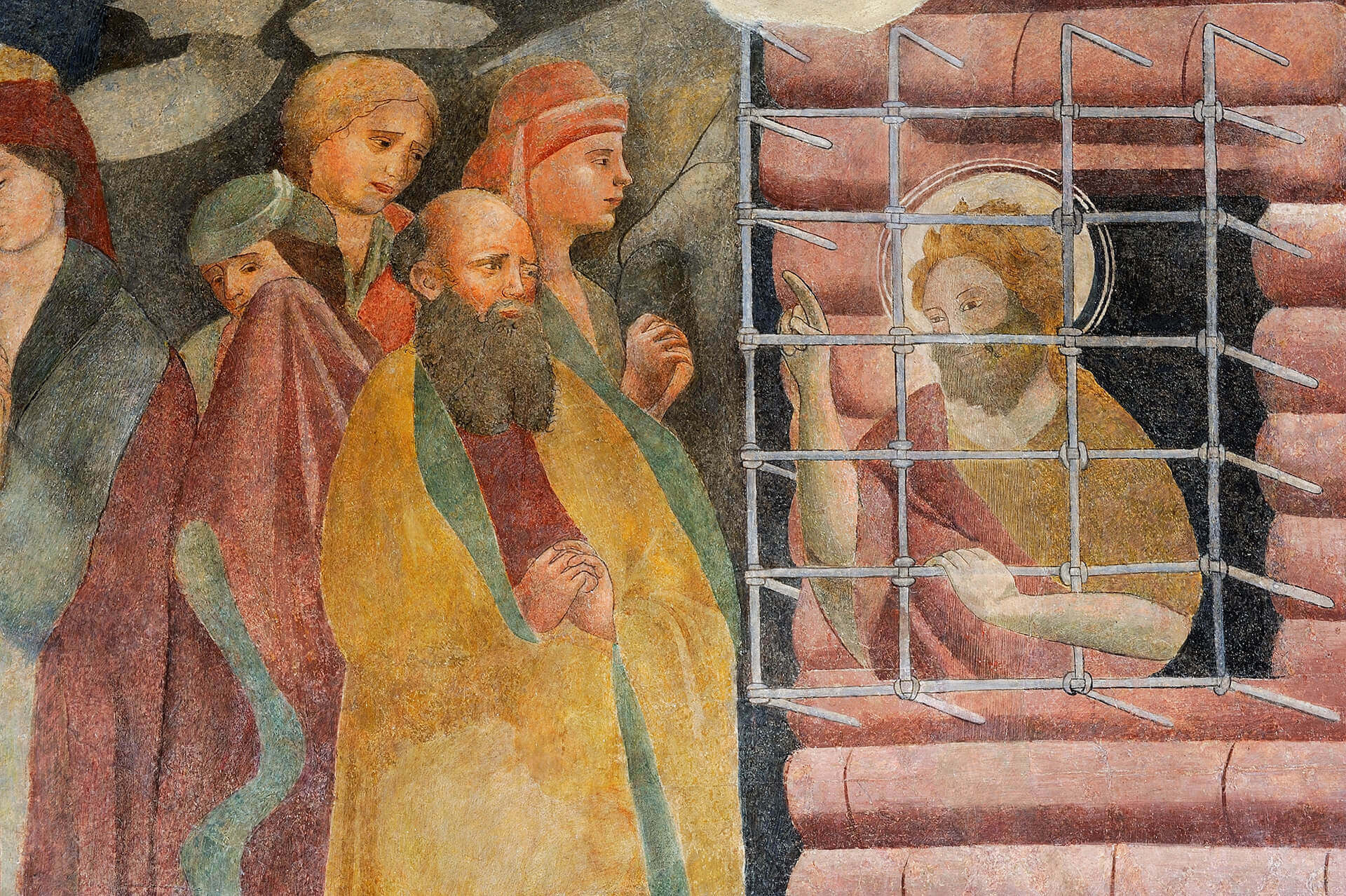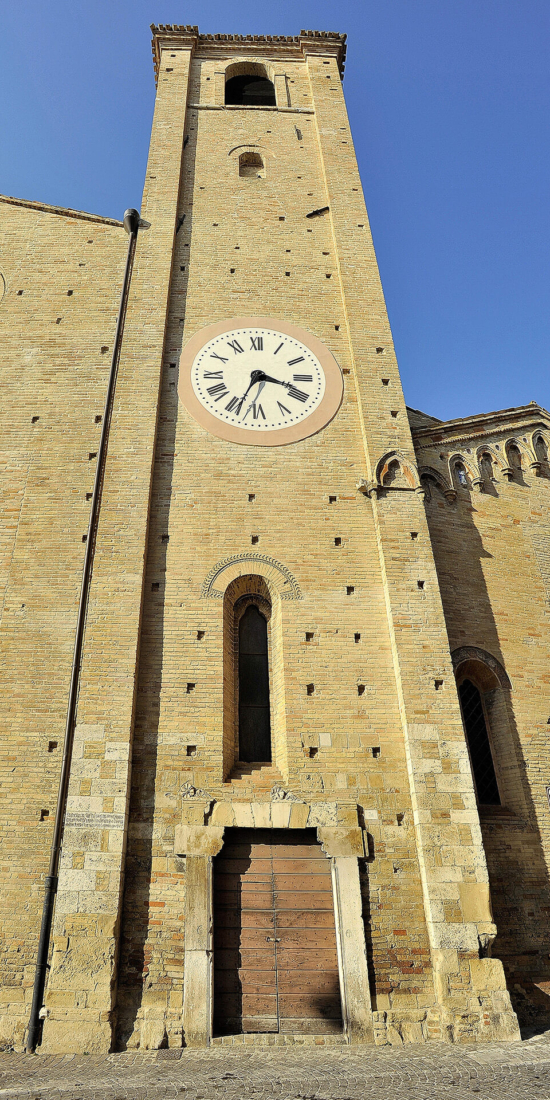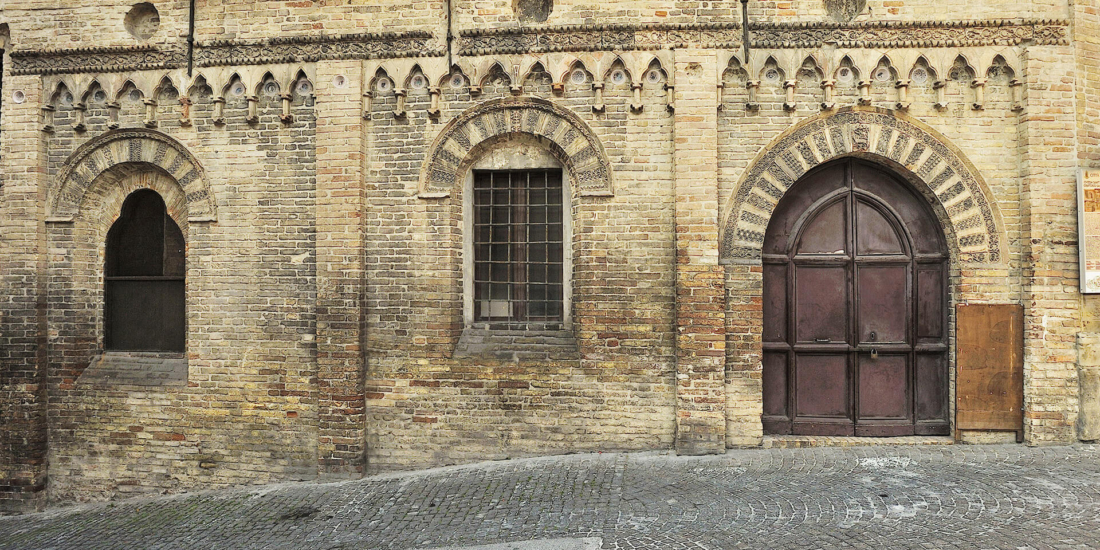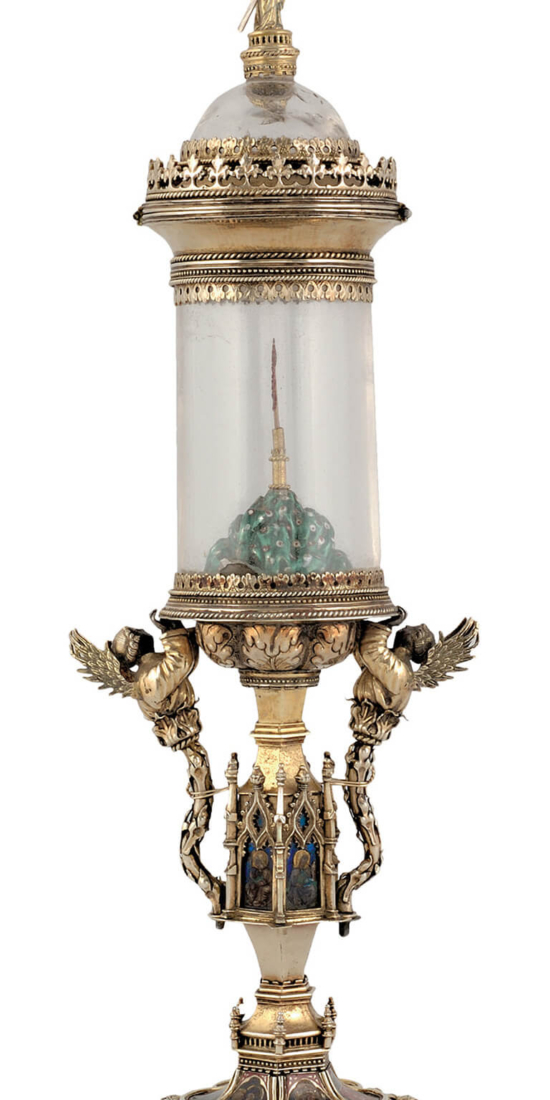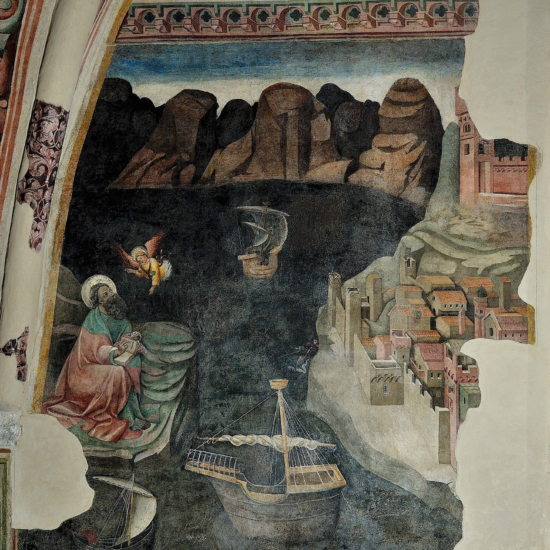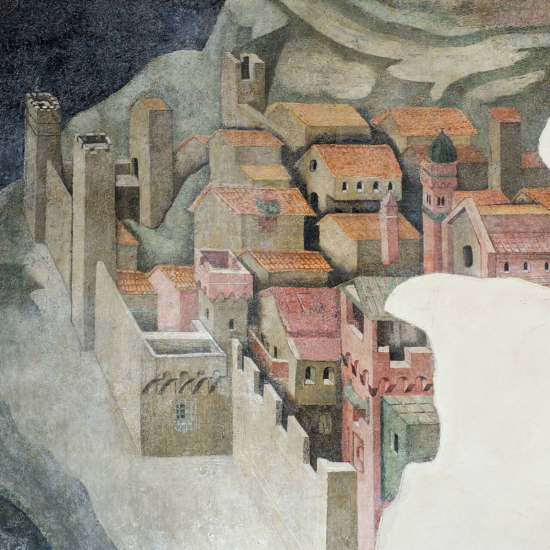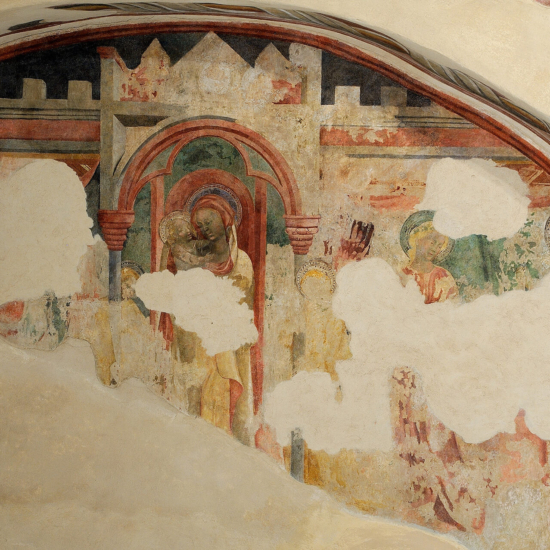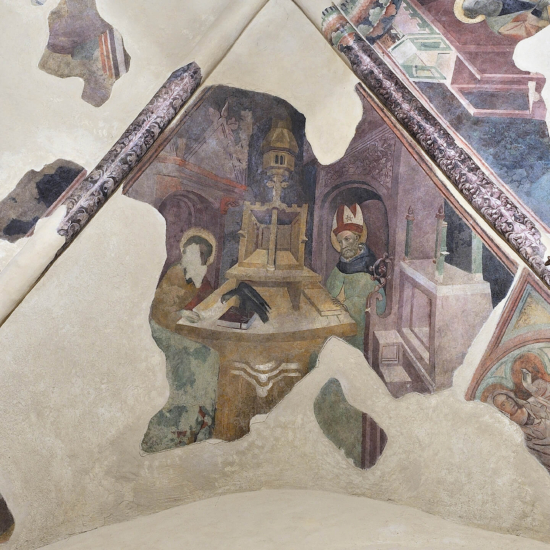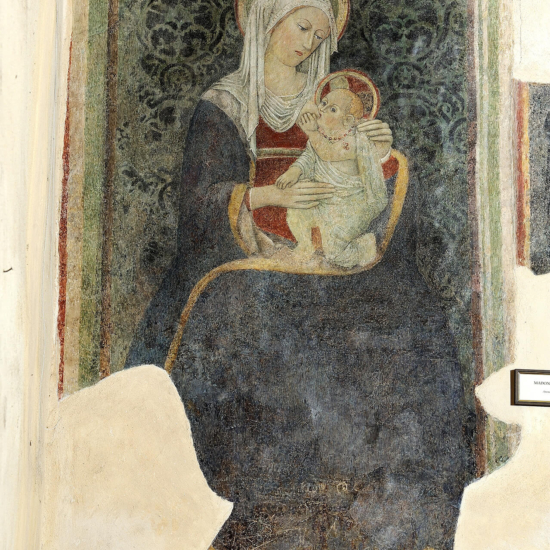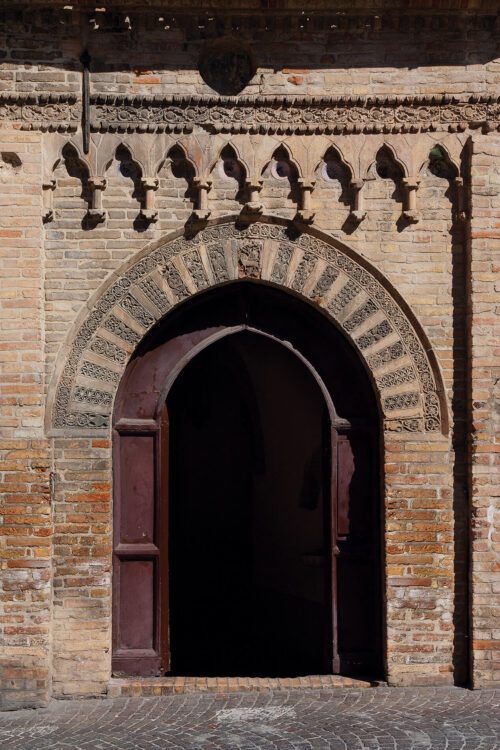The St. Monica Oratory shows a quadrangular shape with a sail cover; it was decorated around 1430 with a cycle of frescoes that, to allow the rehabilitation of the wall structures, were torn from the walls twenty years ago. They were relocated and restored only in 1995.
The attribution of these fascinating frescoes is still an intriguing problem for art historians: Pasquale Rotondi (1936) assigned them to Salimbeni brothers, a reference accepted by various scholars, until the same Rotondi in 1962 reported them to the master of Beata Serafina, noticing affinities with the style of Alberto Alberti.
Fabio Bisogni, an art historian, noticed instead in a well developed article some analogies with the representations of Giacomo di Nicola from Recanati Montepulciano; these were accepted also by Andrea de Marchi.
Finally, we should mention a hypothesis promoted by Federico Zeri, according to which the author of the Santa Monica cycle would be an artist from Pesaro, who was operating also in the Campania area.
Even in anonymity, these frescoes represent however an important testimony of the transitional moment from the ornate and sumptuous style dear to the late Gothic masters to the more realistic and spatially coherent of the early Renaissance. The seductive courtly grace of some figures, with those participating in the “Banquet of Herod“, join the severe layout of other episodes, such as in “San Giovanni a Patmos” or in the “Preaching of the Baptist“, pervaded by an atmosphere of great emotional concentration.
The background wall, without frescoes, now houses an imposing Crucifix in polychrome wood, a powerful figure dating back to the second half of the fifteenth century.
We can therefore affirm that the frescoes of the Santa Monica Oratory, together with the ones in the adjacent temple of St. Augustine, constitute for the ancient city of Fermo a considerable patrimony of art and culture and for the visitors an opportunity to better know the artistic beauties of the Picenum area.

